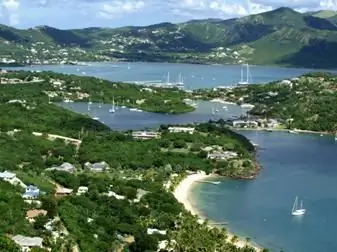- Author Harold Hamphrey [email protected].
- Public 2023-12-17 10:06.
- Last modified 2025-01-24 11:10.
In the middle of the Pregel River, in the very heart of Kaliningrad, not far from Oktyabrsky Island, is Kant Island. It used to be called Kneiphof. It is formed by two branches of the aforementioned river. Since the 14th century, one of the three settlements that made up Koenigsberg has been here.
The island has several beautiful and interesting sights, the main ones being the Cathedral and the tomb of the world-famous philosopher. In honor of the great scientist, this place got its name. But before this event occurred, the atoll experienced many events and renaming.

Peripetia with the name
Modern Kant Island once had its historical name Kneiphof, from the German Kneiphof. The word was formed from the Prussian term knypabe, which translates as surrounded by a river, water. Before the first settlement appeared on the atoll, it had the name Vogtswerder, derived from the German Vogtswerder, which in turn was formed from Vogt, vogt - in charge of which he was and Werder, whichin Russian it sounds like a river island. In 1327, a charter was issued, according to which city rights were given to the island settlement. And at this time, the settlement was renamed Knipaw (Knipaw).
Already in 1333, Kant's island again acquires the new name Pregelmünde, which sounds in German like Pregelmünde. The formation of this name was facilitated by the German words Pregel (Pregel) and Mündung, which means mouth in translation. But this name did not stick, and gradually the Germanized form of the previous name Kneiphof took root in everyday life.
Island development
Kneiphof (now Kant Island) has an extremely advantageous location. It is built at the intersection of land and water trade routes. Therefore, since its inception, it has developed as a center of shipping and trade. By the beginning of the last century, the atoll was densely built up, and five bridges connected it to the land. There was even an interesting problem regarding these structures: it was a task about the seven bridges of the city of Koenigsberg. It was untied by the famous mathematician Leonhard Euler. He proved that it is not possible to cross all the bridges unless one of them has been crossed twice. This example was the beginning of graph theory.
By 1944, Kant Island (Kaliningrad) consisted of 28 streets, 304 houses, a Cathedral and a town hall. Trams ran in the city. But the bombing of British aircraft in August 1944 almost completely destroyed the historical buildings of the atoll. Only the Cathedral managed to survive partially. In the post-war period, the ruins of the city were dismantled forbricks that were sent by barges to the revival of Leningrad.
In the early 1970s, a trestle bridge was laid across the atoll, which became one of the main transport arteries of the entire Kaliningrad. In an attempt to improve the area adjacent to the bridge, a Sculpture Park was laid on the island and an arboretum was laid out. The cathedral was reconstructed only in 1998. This object has become a visiting card and the most important attraction of the village. It is at the walls of this church that the most popular resident of Koenigsberg, the outstanding philosopher and thinker Emmanuel Kant, is buried.

Outstanding Landmark
It is believed that the cathedral on the island of Kant (Kaliningrad) began to be built in 1333. After all, this date is engraved on the weather vane of the North Tower. The local bishop was allowed by the Teutonic Order to build a new cathedral on the island of Kneiphof when it turned out that the old Lutheran church was no longer able to accommodate all the parishioners. The construction of the cathedral lasted for 80 years. It was originally planned that a cathedral-fortress would be built, but after 5 years after the start of construction work, the plans changed, some changes were made to the project, and then the cathedral began to be built as an exclusively religious building.

Cathedral from the inside
If you are on Kant Island, the cathedral is a must see. Today, however, it does not function, and services are held only in the Evangelical and Orthodox chapels, whichplaced inside the object. The rest of the territory of the Cathedral is equipped with a concert hall and a museum. The gigantic concert hall is located on the first floor. It has one of the largest organs in Europe. In the old days, the storyteller Hoffmann played music on it.
Climbing up the spiral staircase, you can see the one-of-a-kind museum exhibition dedicated to Immanuel Kant.
Sculpture Park - another attraction of the island
Kant Island (Kaliningrad) is also famous for its extraordinarily beautiful sculpture park. It is located in the western part of the atoll and is a kind of open-air museum. There is a landmark since 1984. There are approximately 30 sculptures in the park's collection, among which there are pedestals for cultural figures - composers, writers and poets, united by the theme "Man and the World".

The plants that grow here are also of interest in the park. This is almost 1030 different types of shrubs and trees.






